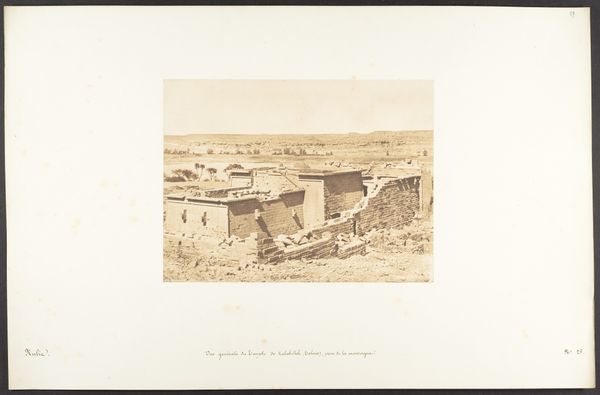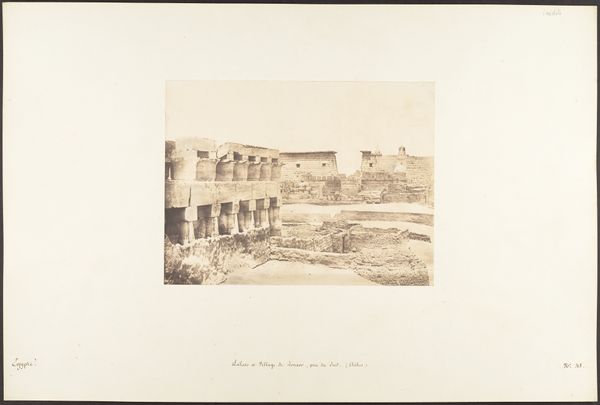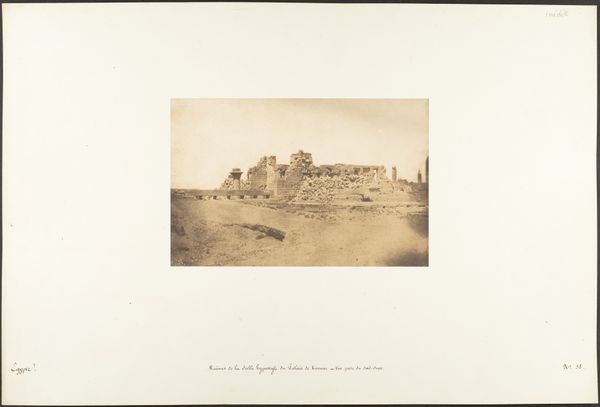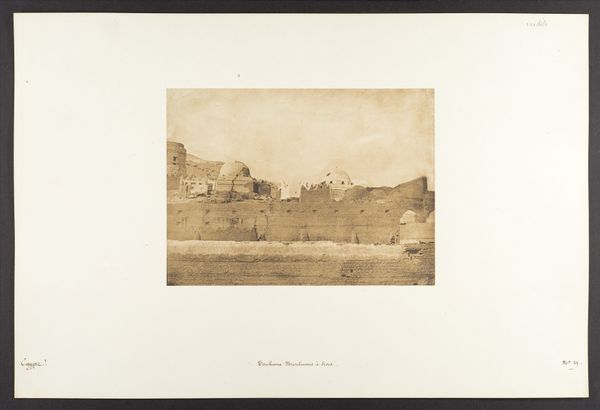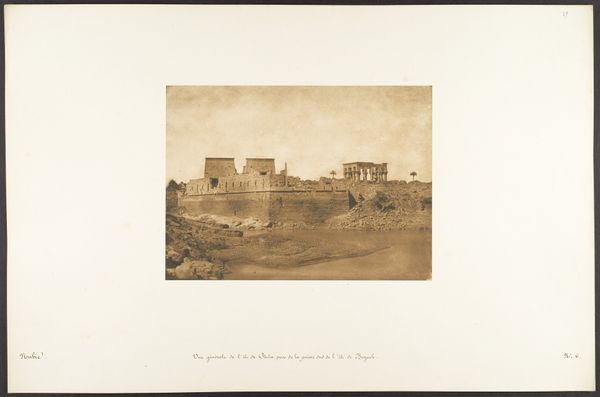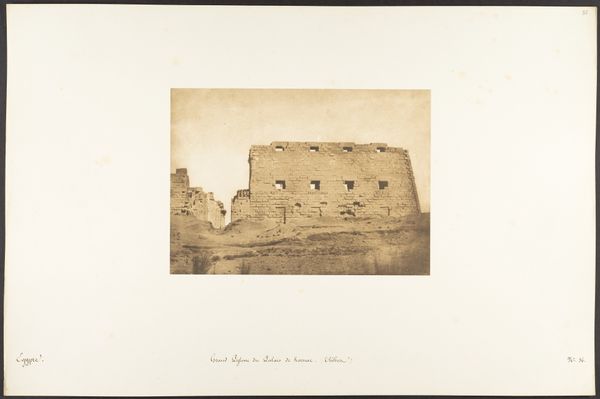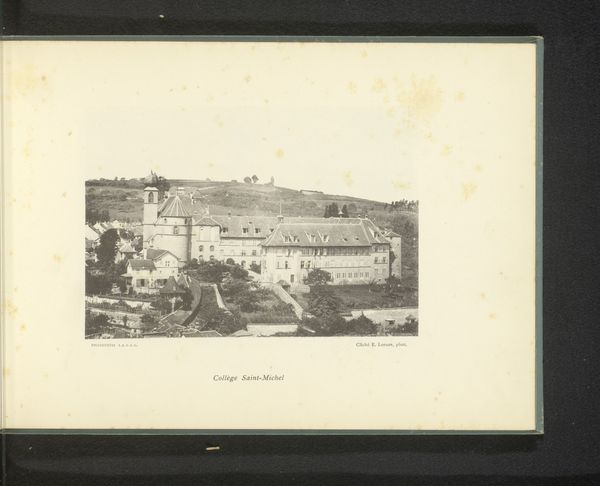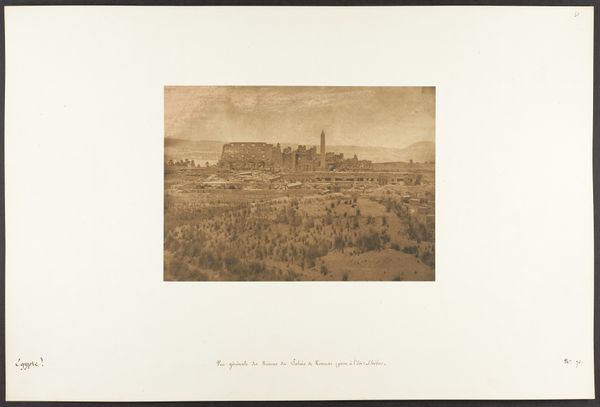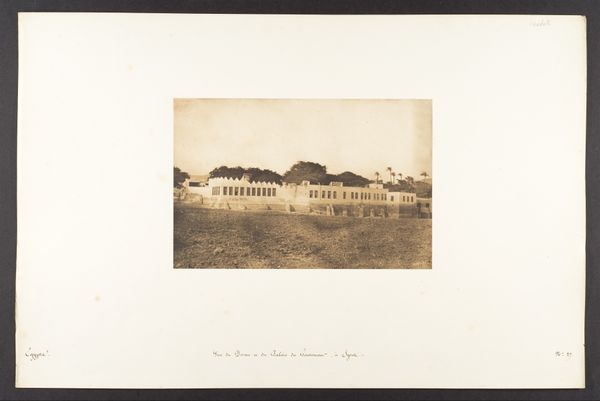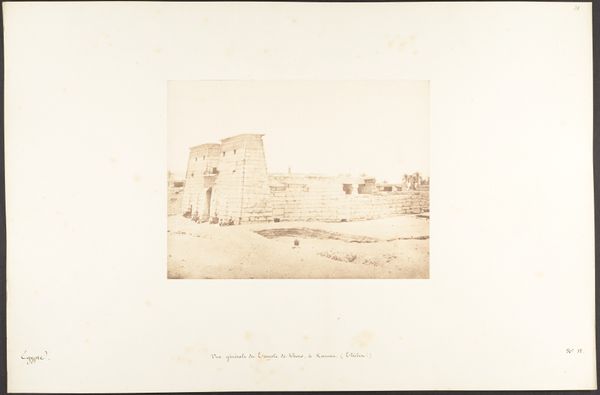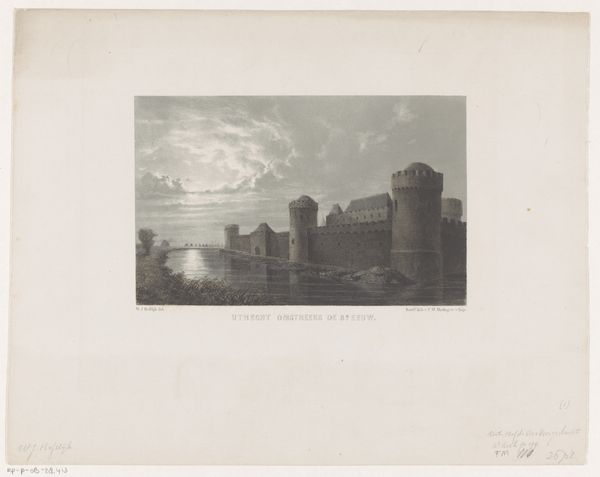
Vue générale de l'île de Philae, prise de l'île de Begueh (Ouest) 1849 - 1850
0:00
0:00
photography, albumen-print, architecture
#
landscape
#
ancient-egyptian-art
#
photography
#
ancient-mediterranean
#
cityscape
#
albumen-print
#
architecture
Dimensions: Image: 6 in. × 7 7/8 in. (15.2 × 20 cm) Mount: 12 5/16 × 18 11/16 in. (31.2 × 47.5 cm)
Copyright: Public Domain
Editor: This is "Vue générale de l'île de Philae, prise de l'île de Begueh (Ouest)," a photograph taken between 1849 and 1850 by Maxime Du Camp. It’s an albumen print showcasing an Egyptian cityscape. The sepia tone gives it such a classical feel. How do you interpret this work? Curator: Well, let’s consider the albumen print itself. This process, invented just a few years prior, involved coating paper with egg whites to create a glossy surface. It was labor intensive, and the ingredients themselves—eggs, silver nitrate—were commodities with specific market values. Du Camp's choice speaks volumes about photography's nascent ambition to emulate the aesthetic of established art forms. Editor: So, you're saying the very materiality speaks to photography trying to establish itself? Curator: Precisely. The laborious preparation highlights a desire to elevate photography from mere documentation to a valued, crafted object. Think of the social context: European interest in Egypt was exploding, and photography provided a means to consume these distant places as material objects. This image, through its specific materials, embodies the commodification of ancient Egyptian culture for a European audience. Editor: That’s interesting. I hadn't considered how the printmaking process itself impacted how the image was perceived. Did that process affect the durability and value of the work at the time? Curator: Absolutely. The longevity of an albumen print is dependent on the care given to the original materials and printing processes. And the ability of the rising middle class to spend resources to have images like these is directly related to economic realities. It reframes our understanding of what exactly Du Camp was *making*. It wasn't *just* an image; it was a physical object embedded within networks of production, labor, and exchange. Editor: This gives me a completely different perspective. Seeing the photograph as a manufactured item makes me think about its circulation and impact differently. Thank you! Curator: My pleasure. Considering the means of production offers a richer appreciation of the artwork's historical and cultural significance, for sure!
Comments
No comments
Be the first to comment and join the conversation on the ultimate creative platform.
